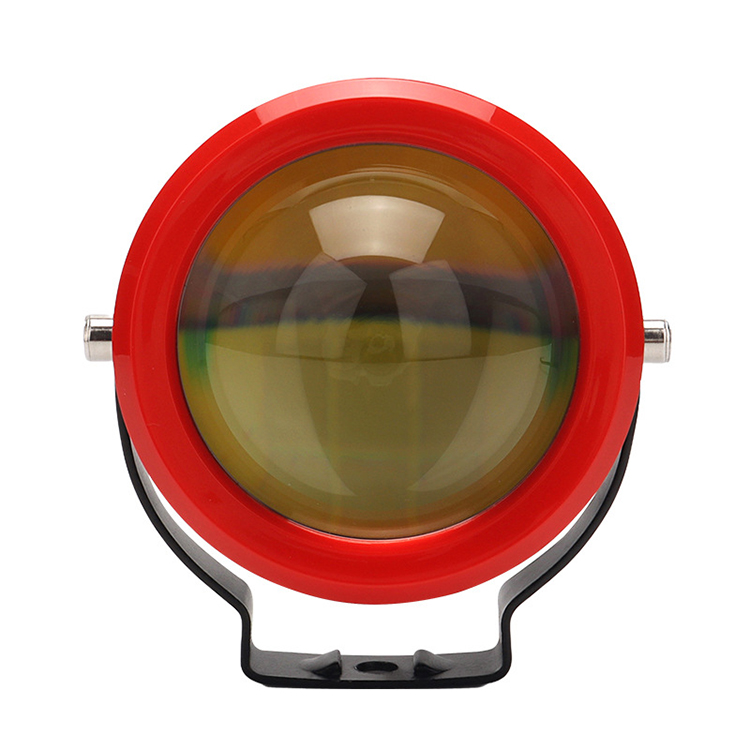Truck warning lights serve as critical safety indicators designed to alert surrounding traffic of potential hazards or special vehicle operations. The color of these lights is standardized and regulated to ensure immediate recognition and appropriate response from other drivers.

Typically, amber or yellow lights are the common colors used for truck warning lights. Amber lights are chosen because they are highly visible in various weather conditions, including fog, rain, and snow, without causing confusion with emergency vehicle lights. These lights indicate caution and are frequently used on service trucks, tow trucks, construction vehicles, and other heavy-duty trucks performing work that may require nearby vehicles to slow down or change lanes.
In some regions, red warning lights may be used but are generally restricted to the rear of trucks, signifying the vehicle is stopped or slowing. Additionally, white flashing lights are sometimes employed to increase visibility but are usually supplementary to the main amber signals.
Regulatory bodies such as the Department of Transportation (DOT) and Federal Motor Carrier Safety Administration (FMCSA) in the United States set guidelines that specify acceptable colors and flash patterns. Compliance with these regulations ensures the safety of the truck operator and other road users by maintaining consistent and universally understood signals.
Motorcycle signal lights are fundamental components for safe riding, enabling motorcyclists to communicate their intentions clearly to other road users. Given the smaller size and increased vulnerability of motorcycles, effective signaling is critical for accident prevention.
Signal lights on motorcycles perform three primary functions: turn indication, lane change signaling, and hazard warning. By activating the left or right turn signal, riders notify others of their intended direction, reducing the risk of collisions during maneuvers. Hazard lights, which cause both signal lights to flash simultaneously, alert surrounding traffic to the presence of a stalled vehicle or an emergency situation.
Due to the limited size of motorcycles, signal lights are designed to be bright and positioned prominently to maximize visibility. Many modern motorcycles use LED signal lights because they offer brighter illumination, longer life, and lower power consumption compared to traditional incandescent bulbs.
In addition to visibility, the color of motorcycle signal lights is standardized—amber or orange is used universally for turn signals. This uniformity helps ensure that other drivers quickly recognize the signals and respond appropriately. Some regions allow rear signal lights to be integrated with brake lights, but the turn indication color remains distinct to avoid confusion.
Proper functioning of signal lights is a legal requirement and a vital safety feature. Riders are encouraged to regularly inspect their signal systems to ensure reliability and avoid accidents.
Snowmobile trailers require reliable lighting to ensure safety during transportation, particularly in harsh winter conditions when visibility is often reduced. Upgrading snowmobile trailer lights can significantly improve safety and compliance with road regulations.
A common upgrade is switching from traditional incandescent bulbs to LED trailer lights. LEDs offer brightness and faster illumination, which enhances visibility for trailing drivers, especially during braking or signaling turns. Their low power consumption is an advantage, preserving the vehicle's battery life.
Weather resistance is another critical factor in choosing trailer lights. Snowmobile trailers are frequently exposed to moisture, salt, and freezing temperatures. Upgraded lights with waterproof and corrosion-resistant housings prevent failures caused by harsh environmental conditions.
Some upgrades include adding additional side marker lights or reflective tape, which increases the trailer's visibility from different angles. This is particularly useful in low-light or snowy conditions where conventional lights might be obscured.
Finally, ease of installation should be considered. Many modern trailer light kits feature plug-and-play connectors that simplify replacement and reduce maintenance time.